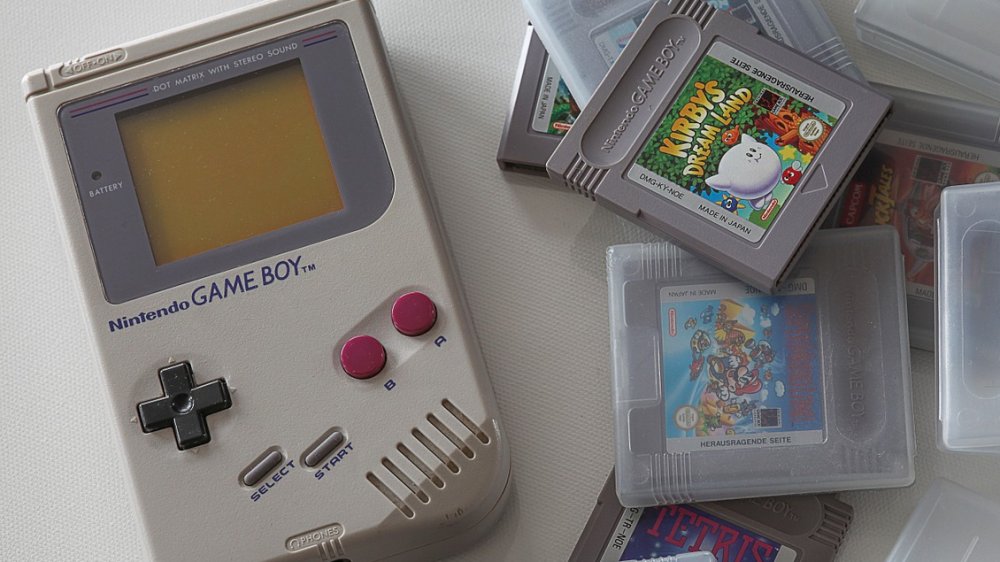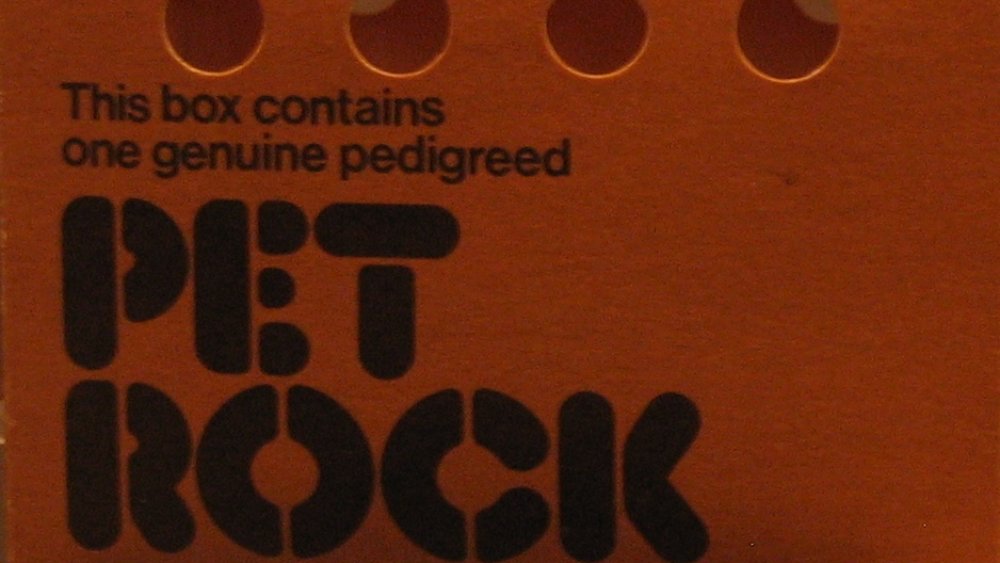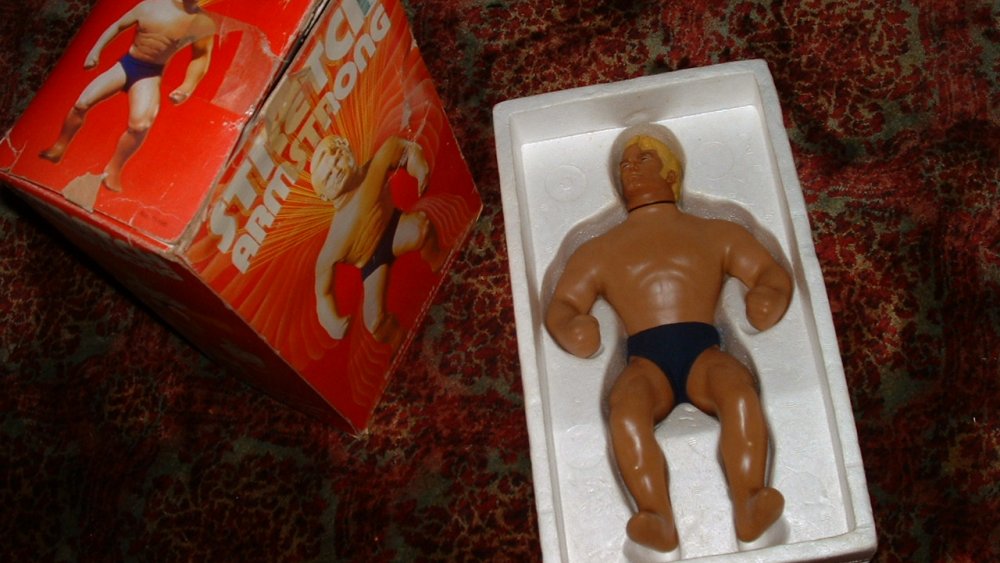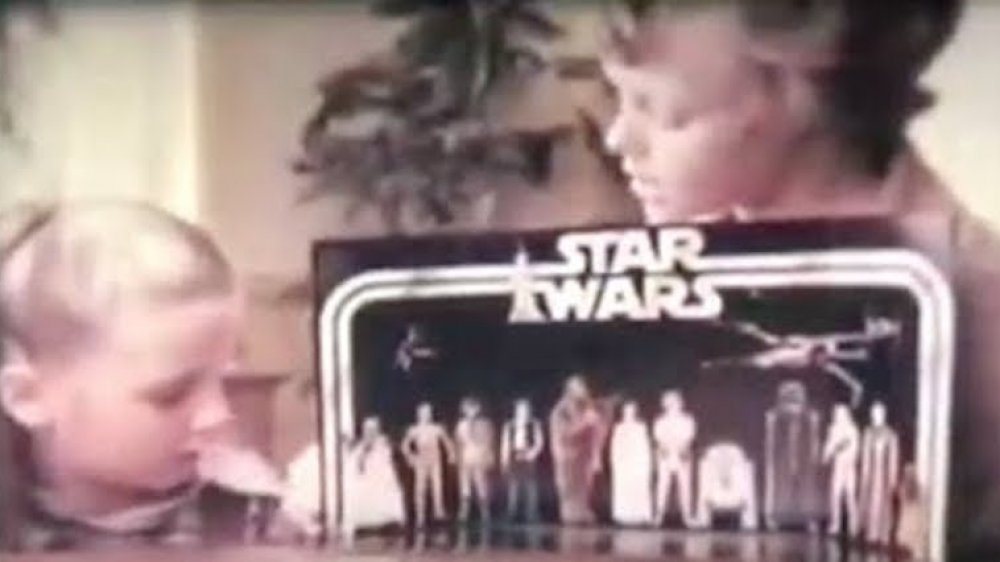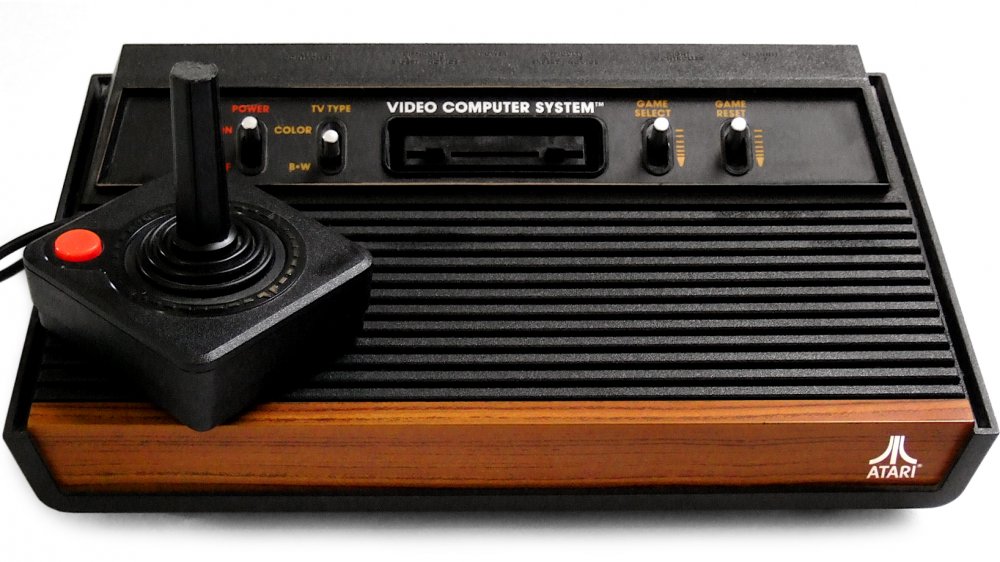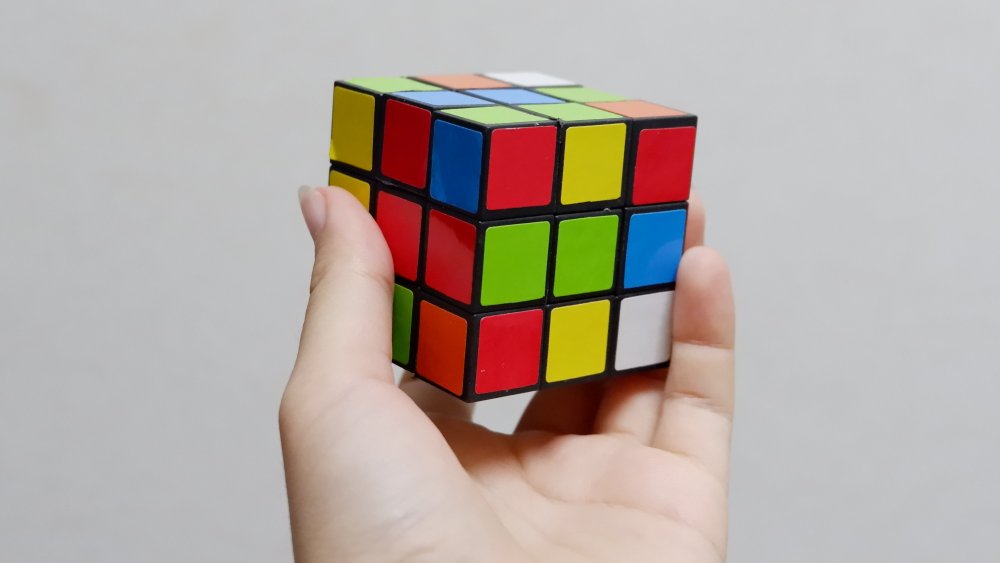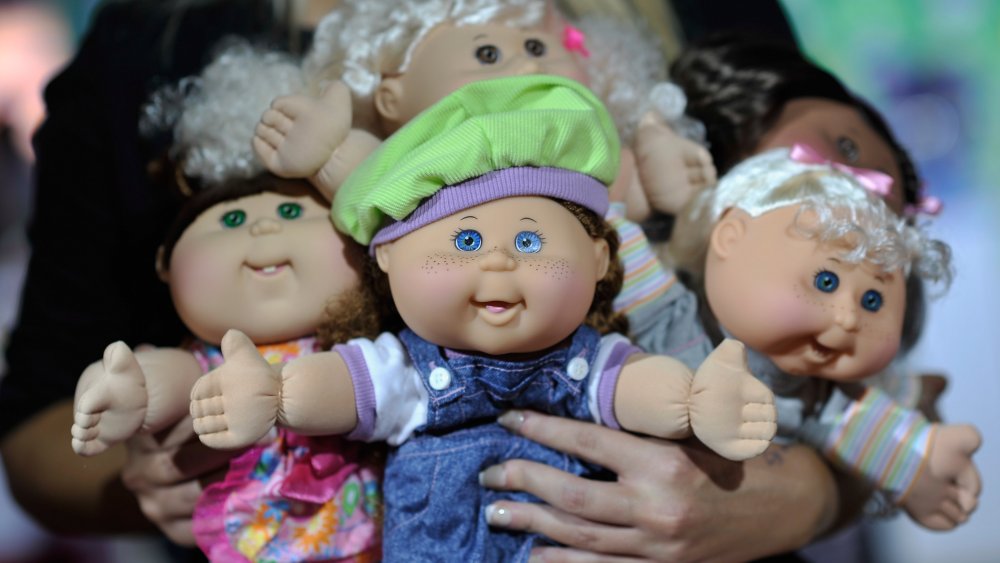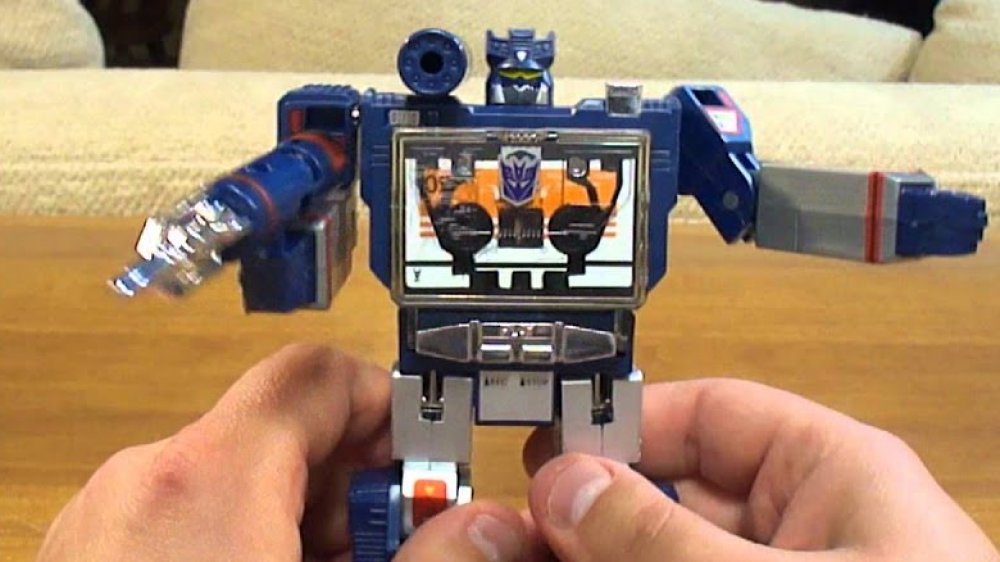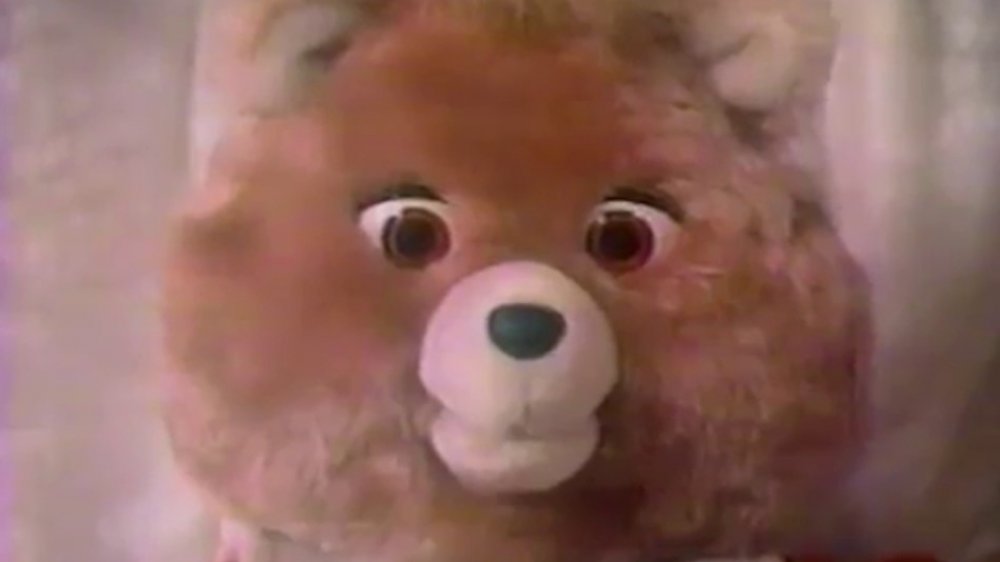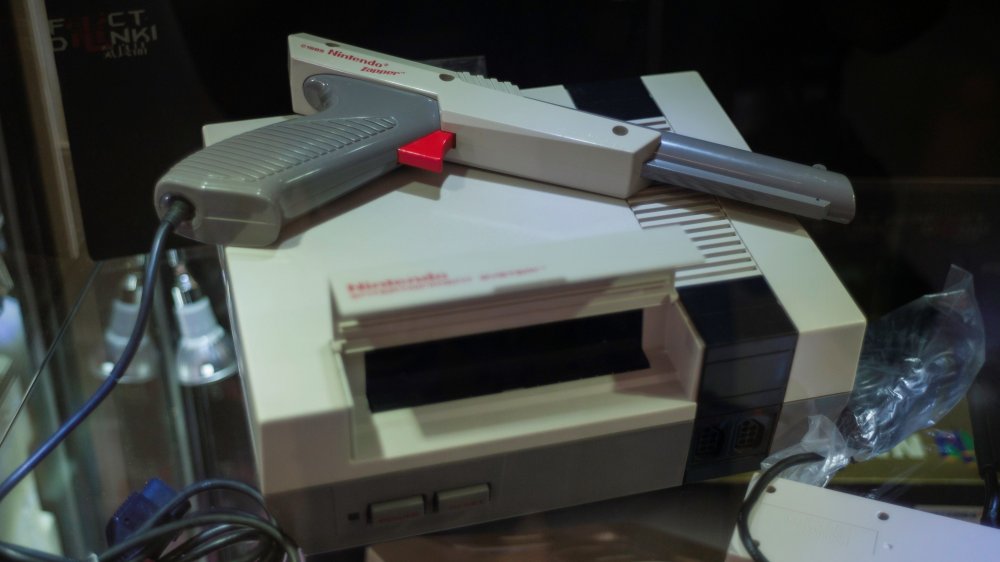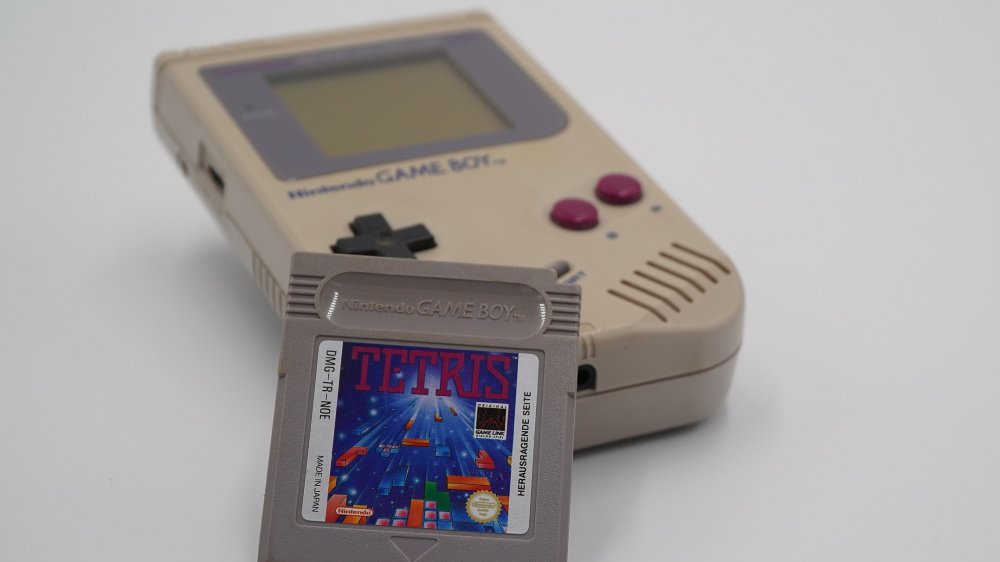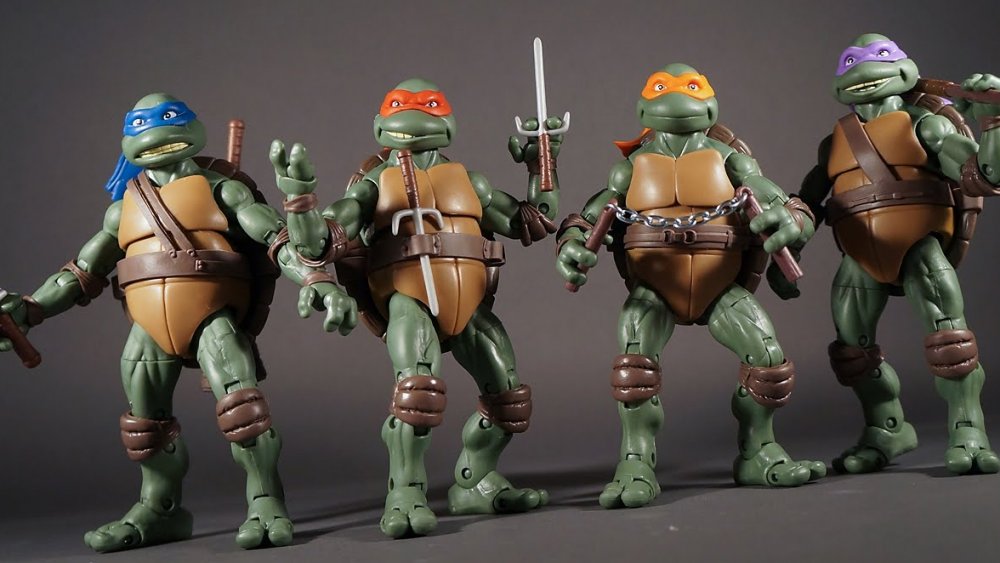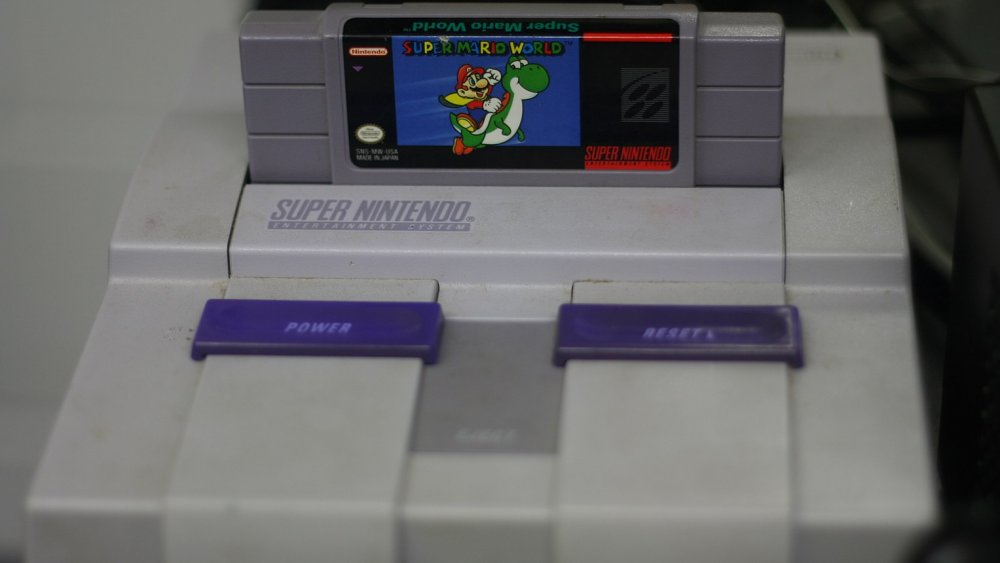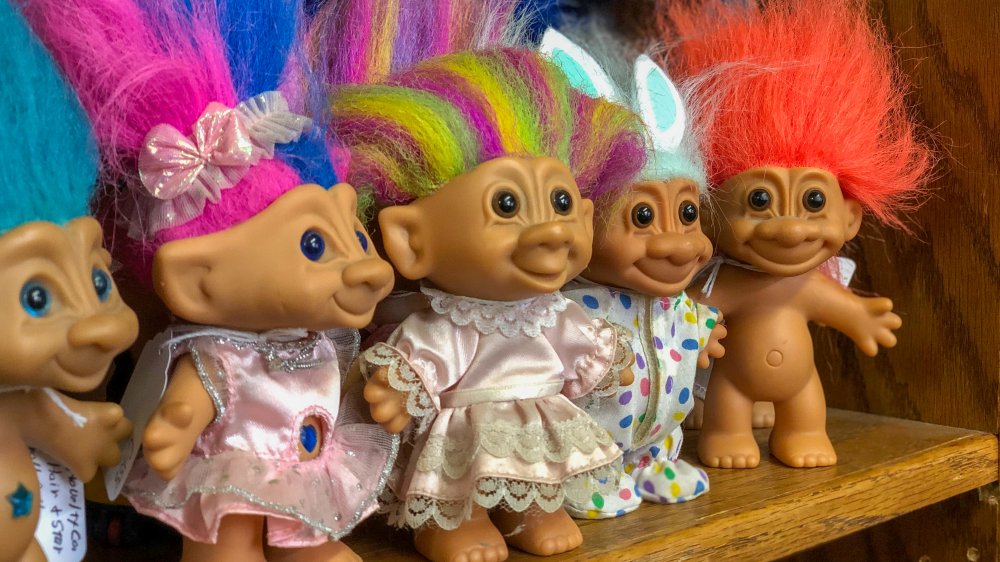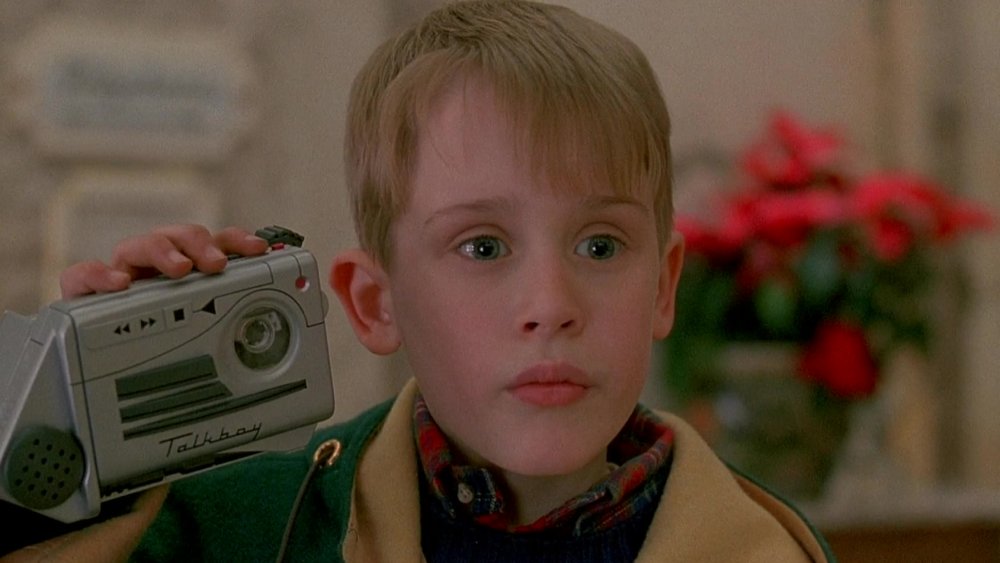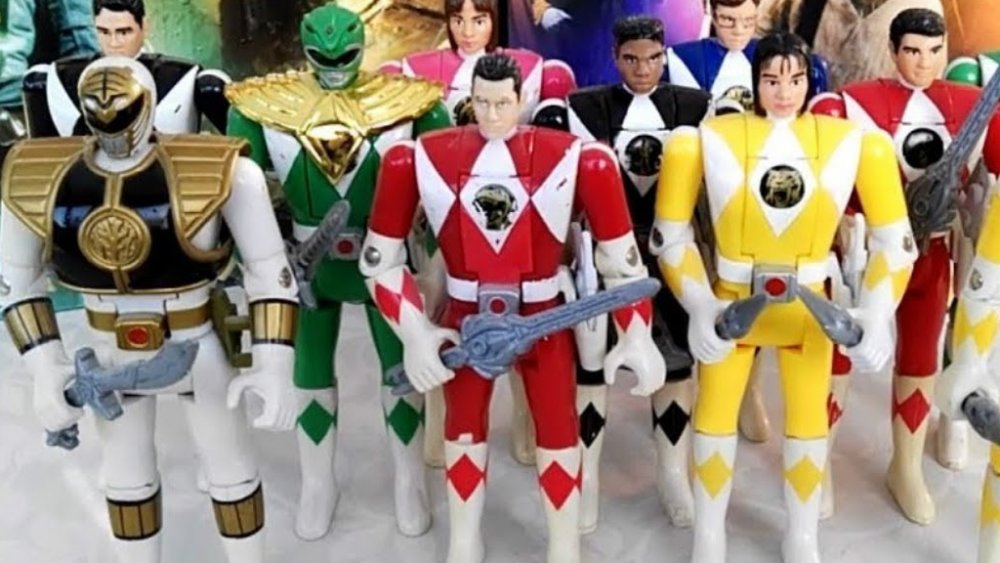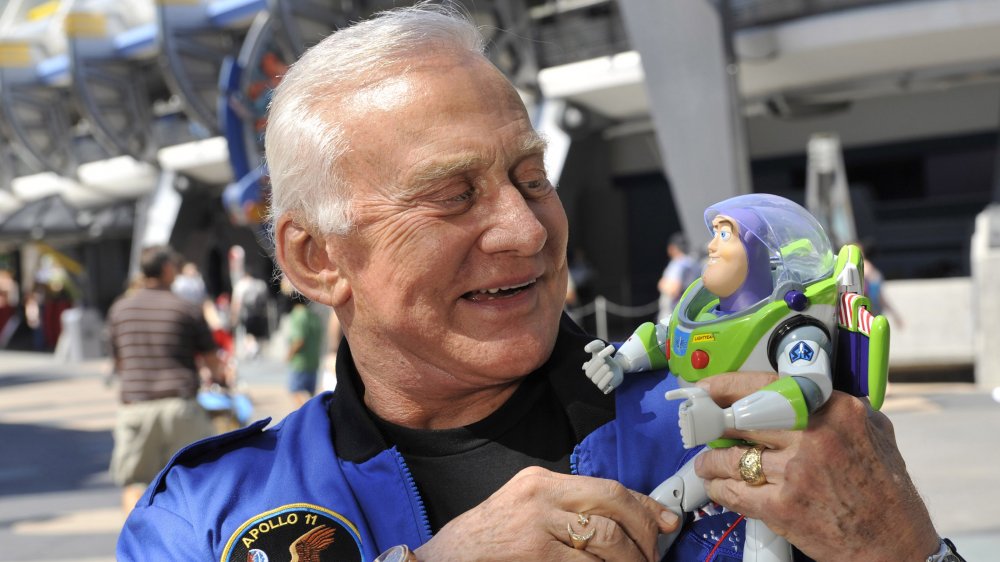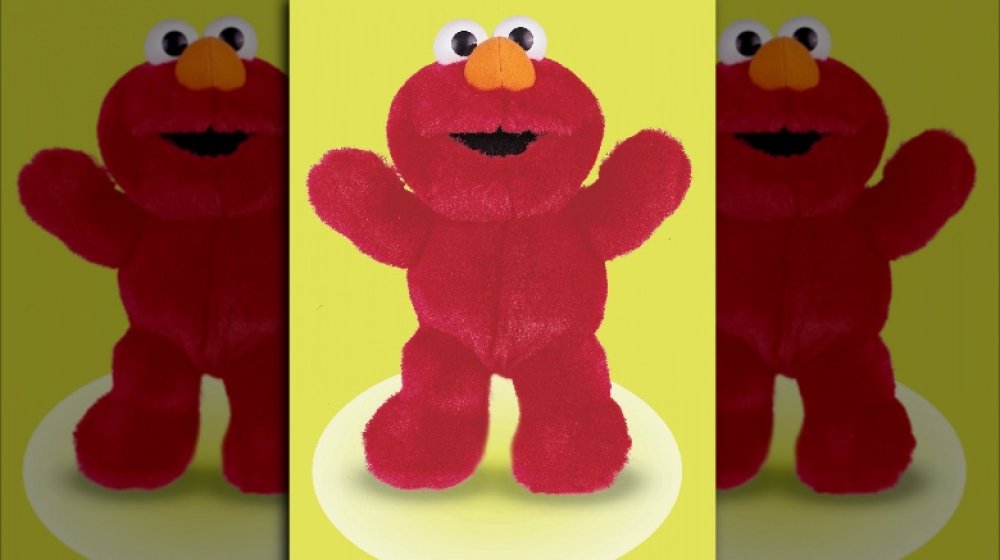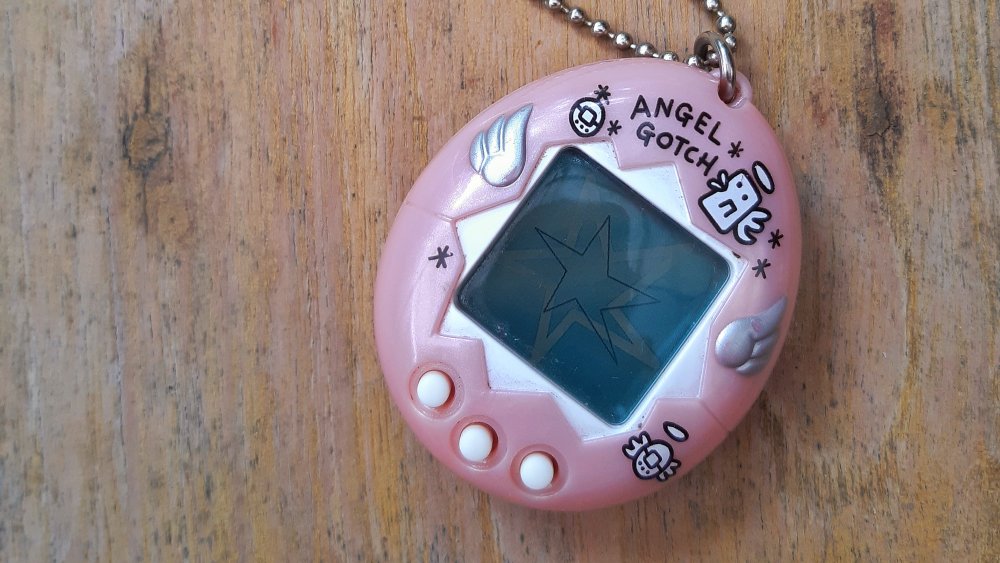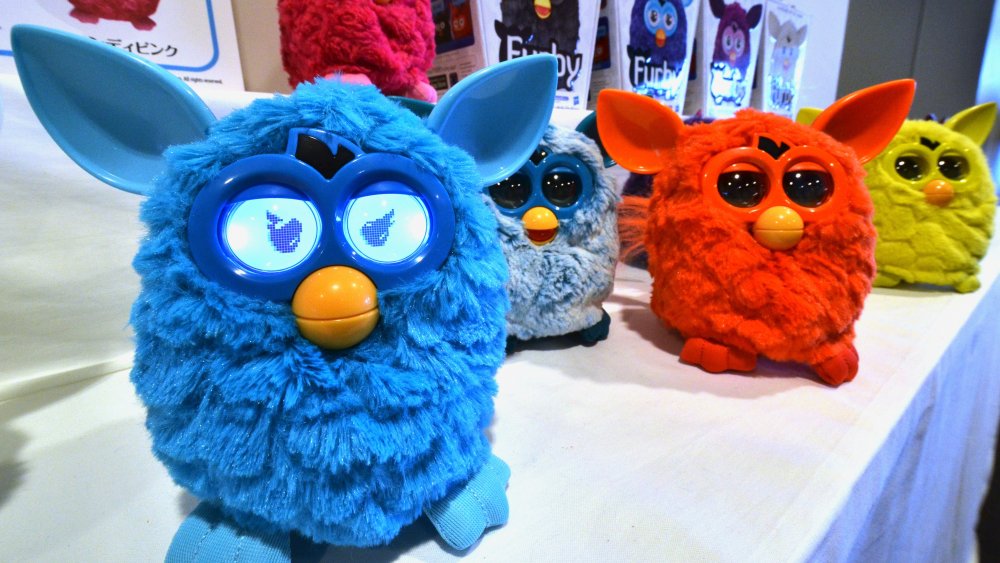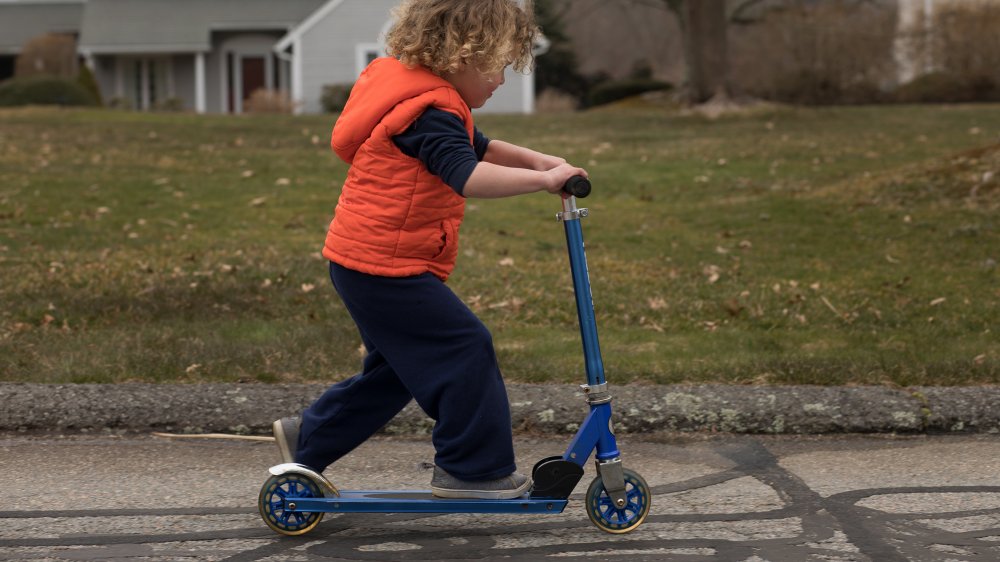The Most Popular Christmas Toy The Year You Were Born
Every year, late November comes, and it's the same thing. The holidays are upon us, with the busy sidewalks, city sidewalks, dressed in holiday style. Every building in town and every store in the mall strings some lights, throws a tree and some fake snow in the front window, and declares the pre-Christmas shopping rush to be underway. From Black Friday until nightfall on December 24th, it's a nationwide frenzy as millions zoom from shop to shop after the perfect gift for their loved ones (or, okay, just buy them online).
And if they're a parent, that gift for their precious little kid back at home simply must be the hot toy of the year, the one advertised day and night, the one newspapers and magazines write trend pieces about, the one that will someday represent this year in a retrospective TV show or online listicle. Yes, every Christmas has a "hot toy," and it's a phenomenon that stretches back decades. Here are the most popular toys of each and every season of the past 40-odd years — what was the most sought after holiday gift the year you were born?
1975: Pet Rocks were rockin'
Now seen as the prototypical example of a dumb fad, the Pet Rock also shows that even in dark times — like in the midst of American malaise after the Watergate scandal and the super messed up Vietnam War — the masses are up for some silly fun. This toy (that didn't really do anything) was a goofy, novelty gift store purchase that turned into an unlikely hit. Advertising executive Gary Dahl took small stones from a Mexican beach and nestled them on beds of hay in tiny cardboard boxes (with holes cut out so the not-actually-alive things could breathe).
The Pet Rock sold well throughout 1975, but such a silly thing made for an ideal gift item for kids (and adults) when the Christmas season rolled around. (It was also a cheap indulgence — the Pet Rock cost a mere four dollars.) By the time this fad died out, about 1.5 million Pet Rocks had found their forever homes.
1976: Stretch Armstrong broke the mold
Kids are a rambunctious and fractious bunch, particularly on Christmas morning, expending all that pent up anxiety from patiently waiting to open their gifts or to see if they made Santa's "nice list" after all. It's impossible to ever know how many family Christmas mornings have been marred by an overexcited kid playing too hard with their brand new toy ... and breaking off a piece of it. No such minor tragedy occurred on December 25, 1976 for the millions of kids happily breaking in their new Stretch Armstrong — a toy new to the market that year which, by design, was nearly impossible to destroy.
Kenner Toys design director Jesse Horowitz came up with the idea, and after considering making the latex doll filled with red-colored corn syrup a sumo wrestler, he made him a blond guy in trunks, which looked like a pro wrestler of the Western variety. His arms, legs, and torso could be pulled, bent, tied in knots and stretched out — at his longest, Mr. Armstrong could be extended to four feet long. Kenner sold $50 million worth of the $11 doll, which remained popular throughout the late '70s.
1977-78: Star Wars action figures were in full force
After action figure market leader Mego Toys turned down the chance to manufacture and distribute toys based on a small, 1977 science-fiction movie with a cast of unknowns, rival Kenner took the deal. That movie: Star Wars, which turned out to be a far more massive hit than anyone could have imagined, and for Christmas 1977, millions of kids wanted nothing more than to find the action figure versions of Luke Skywalker, Princess Leia, Chewbacca, and R2-D2 underneath the tree. Unfortunately, Kenner didn't have ample time to make Star Wars toys, and so, they didn't. To pacify fans, the company sold an "Early Bird Certificate Package" — a shoebox-sized cardboard standee bearing the images of Star Wars figures and a mail-in certificate good for four dolls, which would ship in a couple of months. (A lot of stores sold out of the Early Bird pack, too.) In other words, for Christmas '77, countless parents gave their kids a promise that they'd get them some toys by the spring.
Star Wars figures did make it into stores in 1978, and Kenner sold $100 million worth of what was initially a line of 12 figures. Still, shortages plagued toy shops in this, the first year parents could walk into a store and actually take home a tiny Darth Vader (if they were lucky).
1979 and 1982: Atari was an arcade in your home
Video game consoles are now as perennially popular as more traditional toys like Barbie and Lego, and they took off in the United States in the late '70s. While for years consumers could buy an electronic gaming device that hooked into a TV and allowed them to play simple, pre-loaded games like Pong, the launch of the Atari VCS introduced to many the notion of games on interchangeable cartridges, promising players an arcade-like array of choices. This Atari video game system launched in 1977, and slowly grew in popularity, making a splash during the lead-up to Christmas 1979, selling a million units and fighting off upstarts like the Intellivision and the Odyssey².
Atari dominated the video game market throughout the early '80s, and the VCS, renamed the futuristic and computer-sounding Atari 2600, made its way to four million more homes in 1982 alone. A system isn't any good without games to play on it, and a lot of lucky kids who received an Atari — about seven million of them — also got their hands on Pac-Man, the home console port of the extremely popular arcade phenomenon.
1980-81: it's no puzzle why everyone wanted a Rubik's cube
The Rubik's Cube is the definitive fad of the '80s. Created by Hungarian architect and design teacher Erno Rubik, the hand-sized block requires users to rotate the colored, movable pieces of a six-sided cube until every surface is a unified sea of a single shade. First marketed to adults (with a product launch hosted by Hungarian celebrity Zsa Zsa Gabor), it took off as a children's plaything, because kids had more patience and time to devote to solving the potentially difficult and addictive puzzle said to be capable of three billion combinations.
In the subsequent craze that consumed Americans for the better part of the early '80s, officially-sanctioned Rubik's spinoffs like Rubik's Race and Rubik's Revenge flooded the market, as did ripoffs with names like "Magic Puzzler." Bantam Books best-selling book of 1981: The Simple Solution to Rubik's Cube, purchased by seven million people who couldn't get the colors to line up on their own. By the summer of 1982 — when the fad died down, because the world got tired of puzzle bricks and got really into E.T.: The Extra-Terrestrial — the Ideal Toy Company had sold 30 million Rubik's Cube around the world.
1983-84: mass adoptions of Cabbage Patch Kids
By no means were Cabbage Patch Kids the first soft and squeezable dolls with interchangeable outfits. But they did employ the use of some novel marketing gimmicks that propelled the toy to the center of a legendary retail frenzy. The dolls weren't some mass-produced faceless toy; each one of these dolls came with individualized "adoption papers" that made its new owner more like a parent.
The problem with turning out one "special" doll after another: Each one takes time to make, and parent company Coleco could not churn out enough of them to meet demand. As the dolls' popularity increased as 1983 wore on, leading to madness during the Christmas shopping season. Dolls sold for twice their label price, parents attacked each other over the ones that actually managed to make it off the truck and onto toy store shelves, and other parents camped out in shop parking lots to meet incoming shipments. The fad didn't subside in 1984, and Coleco got ahead of the curve, increasing production well before the holiday season arrived that time. But the dolls remained hard to get, with thousands of parents on waiting lists by Christmas 1984, receiving those dolls well into 1985. By then, distributor Coleco enjoyed sales of $776 million, the vast majority of that from Cabbage Patch Kids.
1985: Transformers disguised themselves as presents
More than 20 years before it was a billion-dollar movie franchise that launched Shia LaBeouf and Megan Fox to superstardom, the Transformers was a line of toys — robots that, with a few turns and clicks — "transformed" into cars, trucks, cassette players, and other everyday objects that concealed the robots' true identities as alien automatons. (The good guys are the Autobots and the villains are the Decepticons.) Based on descriptions and characterizations devised by comic book writer Bob Budiansky, the Transformers toys were based on repurposed Japanese lines from the previous decade. The Diaclone and Microman toys weren't too popular, so Takara Toys let Hasbro have a go at redesigned the figures.
Launched in late 1984 alongside the animated Transformers series, the toys gave Cabbage Patch Kids some healthy competition that Christmas and exploded in popularity in 1985. First generation toy robots like Optimus Prime, Bluestreak, Jazz, Soundwave, Mirage, Ratchet, and Sunstreaker accounted for $333 million in revenue for Hasbro that year, about a quarter of their total revenue in 1985.
1986: Teddy Ruxpin was everyone's friend
In the 1980s, an engineer named Ken Forsse took a toy as old and classic as they come — the teddy bear — and added in some cutting-edge technology to make Teddy Ruxpin, the first commercially available toy to feature animatronics. Teddy was outfitted with a cassette deck, where kids placed one of 60 tapes full of stories about the wonderful Land of Grundo, along with programmed commands to servos in the toy's head. The result: Teddy gently told tales aloud to little kids while his lips and eyes moved, like some kind of friendly robot. It's tech not unlike the "Audio Animatronics" employed by the "Hall of Presidents" at Disneyland — where Forsse honed the skills he needed to create Teddy Ruxpin.
The toy, distributed by a company called Worlds of Wonder, hit stores in late 1985, just before a related Saturday morning special aired on ABC, and its popularity grew in 1986. By Christmas, it was one of the most sought after toys in the country. In just one year in stores, $93 million worth of Teddy Ruxpin dolls sold. Even with a then-steep $70 price, that's still more than 1.3 million Teddys.
1987-88: the Nintendo Entertainment System was a revolution
Some poor and expensive business decisions at Atari led in part to a crash of the video game industry in 1983. But by 1985, Japanese entertainment company Nintendo thought that the time was right to launch a new system offering eye-popping graphics and sound and made all those old Atari titles look like crude, pixelated dot.
Sales of the Nintendo Entertainment System picked up when the company offered the product in different packages. One basic set came with the game Super Mario Bros., followed by the more expensive Action Set the next year, with included everything from the previous set — main unit, controllers, Super Mario Bros. — plus the shooting game Duck Hunt and a light-utilizing NES Zapper with which to play it. And thus a golden age of video gaming was born. Playing Nintendo, and talking about Nintendo, dominated youth culture in the late 1980s, and game characters like Mario, Luigi, Little Mac from Mike Tyson's Punch-Out!, Link from The Legend of Zelda, and Samus Aran from Metroid became household names in homes that had a Nintendo.
And a lot of houses had an NES — it was a retail phenomenon, selling 10 million copies by the beginning of the 1988 holiday shopping season and controlling 80 percent of the home video game market. (Sorry to you, then, Sega Master System and the last gasps of Atari.) By the end of Christmas '88, another seven million kids (and adults) had received an NES.
1989: the Game Boy was Nintendo but portable
What's the only toy that could stop the retail juggernaut that was the Nintendo Entertainment System in the late 1980s? The Game Boy, an innovation in video games from ... Nintendo. It wasn't exactly the newer, better, faster, next generation of the NES, but rather all the fun of that system in pocket-sized, battery-powered fun. Via the $90 device's two-inch, green-colored screen, gamers could leave their bedrooms and rec rooms and bring the Nintendo wherever they went with games like Tetris (which came bundled with the system), Dr. Mario, and Tennis.
Along with a brand new Game Boy and Tetris, plenty of kids got another game to play on Christmas: Super Mario Land, which ultimately sold 18 million copies. Portable consoles became a very profitable alternative to traditional gaming for Nintendo, as the original Game Boy led to a whole line of pocketable, on-the-go systems, such as the Game Boy Advance and the 3DS. All told, Nintendo sold more than 118 million original Game Boys.
1990: Teenage Mutant Ninja Turtles toys made kids say 'cowabunga'
The Teenage Mutant Ninja Turtles, these "heroes in a half shell," are an unlikely success story. The franchise — about a quartet of mutated reptiles named after Renaissance artists who live in a sewer, eat pizza, and train in the ninja arts under a rat sensei — launched as an underground, black-and-white comic book in 1984. By 1987, a popular animated TV series was on the air, and in 1990 the first live-action Teenage Mutant Ninja Turtles movies hit theaters and earned $200 million at the box office.
Action figure versions of Leonardo, Raphael, Michelangelo, Donatello, Splinter, Shredder, Bebop, Rocksteady, and their ilk were readily available in the late '80s, but sales absolutely exploded after the film. More than 300 products hit toy stores in time for Christmas, some of them in demand-triggering limited quantities. Prior to the holiday season, industry experts predicted retailers would move $200 million worth of turtle toys.
1991: the Super Nintendo Entertainment System was Nintendo but better
For the fourth Christmas in five years, the number one thing on kids' minds (and wish lists) was a Nintendo product. This time it was the Super Nintendo Entertainment System, the video game maker's latest and greatest home console. It retailed for $199, twice the price that the NES had sold for a couple of years earlier, but then its graphics were, at least in theory, twice as good, a 16-bit system as opposed to the 8-bit player of the old Nintendo.
Hitting stores in the late summer of 1991, only a handful of games were available at launch, including the bundled Super Mario World as well as Pilotwings and F-Zero also in stores for $50 a pop. Nintendo anticipated selling at least two million SNES packs by the time Christmas was over, despite competition from the equally fast and next-level Sega Genesis and its Sonic the Hedgehog, which sold altogether for just $150. A lot of people were gifted an SNES over the years — Nintendo ultimately sold more than 23 million systems.
1992: Troll dolls captured the public's imagination
A fisherman and woodworker from Gjøl, Denmark, named Thomas Dam invented troll dolls in 1959, when, the story goes, he couldn't afford a store-bought toy to give his daughter for her birthday so he just made one, inspired by his own imagination and the forest-dwelling, luck-bringing trolls of Nordic legend. Dam's daughter took her eye-catching troll everywhere she went, and a Danish toy store owner's interest prompted Dam to form a company and sell them around the world. About a million genuine article, Good Luck-branded article trolls were purchased in the U.S. in 1964, its first American popularity surge but not its last.
Trolls never really went away, but experienced another sales boom in 1992, when retro toys — G.I. Joe, erector sets, and jacks — were hot for Christmas. Far and away the most popular old-school toy that Christmas: good old trolls, with their naked bodies and shock of rainbow-colored hair. In the early '90s, Americans snatched up about $1 billion worth of trolls.
1993: the Talkboy talked itself into existence
In 1990, the first Home Alone movie was a massive hit at the box office, bringing in $280 million on its way to becoming a classic Christmas movie, as people couldn't get enough of little Kevin McAllister (Macaulay Culkin) burning burglars' hands with coal starters and smashing in their faces with paint cans. If Home Alone popularized torture, Home Alone 2 popularized personal voice recorders for kids. In the second film, Kevin gets separated from his family in New York, and uses a device called a Talkboy to slow down and deepen his voice, allowing him to pretend to sound like an adult over the phone.
At the time of the film's production in 1992, the Talkboy wasn't technically a real product — it was a prop imagined for the movie, based upon details given by screenwriter John Hughes, who wanted Kevin's device to seem real but also next-level. But it was also super-slick product placement; an actual Talkboy hit the shelves the exact same day the movie was released. Demand for this toy was so high that Tiger Electronics manufactured the Talkboy for years to come. They had toy store shelves around the country well-stocked with the Deluxe version of the toy in time for Christmas 1993, although plenty still sold out of the fancy tape recorder.
1994: it was morphin' time for Mighty Morphin' Power Rangers
By the early '90s, a new action figure line hadn't really hit it big since G.I. Joe and Masters of the Universe dolls dominated the toy aisle in the mid-1980s. It took an action-packed daily TV show to bring on the resurgence, and that series was Mighty Morphin' Power Rangers. The show followed a group of teenage martial arts experts who wore different colored, identity-hiding masks and jumpsuits who used their skills — and giant robots — to defeat bad guys from outer space.
Easily identifiable characters? Weapons? Robots? This show had everything kids liked, and which could be easily marketed. After the show debuted in late 1993, Power Rangers fever took hold in 1994, and by Christmas that year, toy stores couldn't keep enough in stock. Some shops resorted to making customers ask for them, or limiting sales, to fend off predatory toy dealers who'd buy up stock and resell them at a huge markup. They even sold on QVC — a two-hour Power Rangers toy event moved $1.9 million worth of product in two hours, at the time a record for the home-shopping channel. Just before before Christmas, manufacturer Bandai fielded 700 phone calls a week from frantic parents looking for stores that may have a Red, Blue, or Pink Ranger still laying around.
1995: parents went to the moon and back for Buzz Lightyear toys
By the time the new millennium rolled out, a Pixar movie was a cultural event. The Disney-owned computer animation studio almost always releases a critically acclaimed movie that kids and their parents clamor to see, an experience they can commemorate with the purpose of some tie-in toys at a well-stocked big-box store.
The shops just were not prepared in 1995 in the aftermath of the release of the very first full-length Pixar movie, Toy Story. Pixar wasn't yet a major force in the market, and even a movie about toys didn't prompt big retailers to have enough merchandise in stock, particularly fully-functional, real-life plastic versions of Buzz Lightyear, one of the movie's main characters and who is described as a "cool toy." Between the film's release on November 22, 1995, and Christmas a month later, a Toy Story toy frenzy developed, as parents snatched up the limited number of Thinkways-produced toys available. That led to a clever joke in 1999's Toy Story 2. During a scene in Al's Toy Barn, Barbie explains the aisle packed floor to ceiling with Buzz Lightyear toys is because, "In 1995, shortsighted retailers did not order enough toys to meet demand."
1996: Tickle Me Elmo tickled kids' fancies
While at the time it was watched daily by millions of rapt children and boasted a cast full of extremely popular Muppets, Sesame Street was never intended to be a cash cow. After all, it started way back in 1969 as an educational TV show, aimed at inner-city kids, airing on commercial-free public TV of all places.
Perhaps that noble, long-ago origin in the world of non-profits is how the toy industry underestimated the massive demand in 1996 for Tickle Me Elmo, a talking, vibrating doll based on the red, furry, childlike Muppet from Sesame Street. Tyco Toys launched Tickle Me Elmo, a $30 toy, which laughed and quaked upon a tickling, in July 1996, planning to manufacture and sell about 400,000. That's a lot of dolls, but they were selling out so fast that the company ramped up production, shipping a million Tickle Me Elmos to toy store in time for Christmas, which still wasn't enough for everyone that wanted one. Stores ran out of them as quickly as they got shipments, with desperate parents lined up for hours to muscle each other out of the way to grab one of these must-have Christmas treasures.
1997: Tamagotchi demanded attention
A decade before everybody with a pulse started carrying around a sophisticated computer that could also make phone calls, American kids got their first taste of omnipresent pocket tech they couldn't live without via an imported Japanese toy from Bandai called Tamagotchi. (That words means, roughly "egg watch.") Slightly larger than a golf ball, this virtual-egg-hatched virtual pet (as pictured in pixelated form on the device's screen) required owners to constantly tend to certain needs — feeding them with a button, paying attention to it, and such. If they didn't, the creature died. Because they couldn't just leave the toy at home, lest they risk that death, young Tamagotchi owners took their virtual pets to school, where they proved such a distracting annoyance that they were banned in some jurisdictions.
Nevertheless, the $15 gadget was the must-have, hot new toy of 1997, with stores selling quickly selling out of huge Tamagotchi shipments.
1998-99: Furby spoke kids' language
Just a year after every kid wanted a Tamagotchi for Christmas, every kid wanted another electronic pet called the Furby, although this one was covered in fur and at least looked like a real animal (or maybe just Gizmo from Gremlins). The toy's backstory is that they're adorable aliens who are fluent in their native language of Furbish. They speak nothing but this seemingly nonsensical language at first, but, as kids spend more and more time with them, they started to learn and use English (or whatever the child's primary language). So the Furby was a stuffed animal, but also a technologically sophisticated one — a robot capable of learning and adapting.
The toy, with its huge bulbous eyes and fur of many colors, retailed for $35, but demand for it just after launch in 1998 sent prices up to $100 or more in secondary markets. That didn't so much matter — by Christmas 1998, Tiger Electronics had sold about 1.8 million Furbys. And this fad only got bigger. By the end of 1999, an astounding 27 million kids were teaching language skills to their cute little pet Furbys.
2000: Razor scooters cut down the competition
Since the late 1970s, when kids fully embraced and then never, ever let go of video games, parents tend to grow relieved and delighted when the hot toy at the top of their young ones' holiday gift list is something that encourages exercise and playing outside. That attitude likely helped fuel brisk sales of the hottest toy of late 2000: kick scooters, so named because that action is how the rider makes them go. They were also known as razor scooters, or rather Razor scooters, for Razor USA, the company that introduced them to the marketplace. (Founder Carlton Calvin knew a thing or two about fad toys — he also brought finger skateboards and Pogs to brief but massive popularity.)
Razor's top-of-the-line, $100 scooters, as well as knockoffs and ripoffs by other companies that charged around $40, were essentially a skateboard with a tall handle, the whole thing a sleek, swift package of lightweight metal. Razor scooters also sold well because they were available in more than just toy and big-box stores — high-end novelty stores like The Sharper Image and Brookstone stocked the toy too. Calvin estimated that Razor sold five million scooters that Christmas, but also that it held only a 50 percent share of the scooter market, meaning as many as 10 million kids landed the gift of wheels in 2000.
